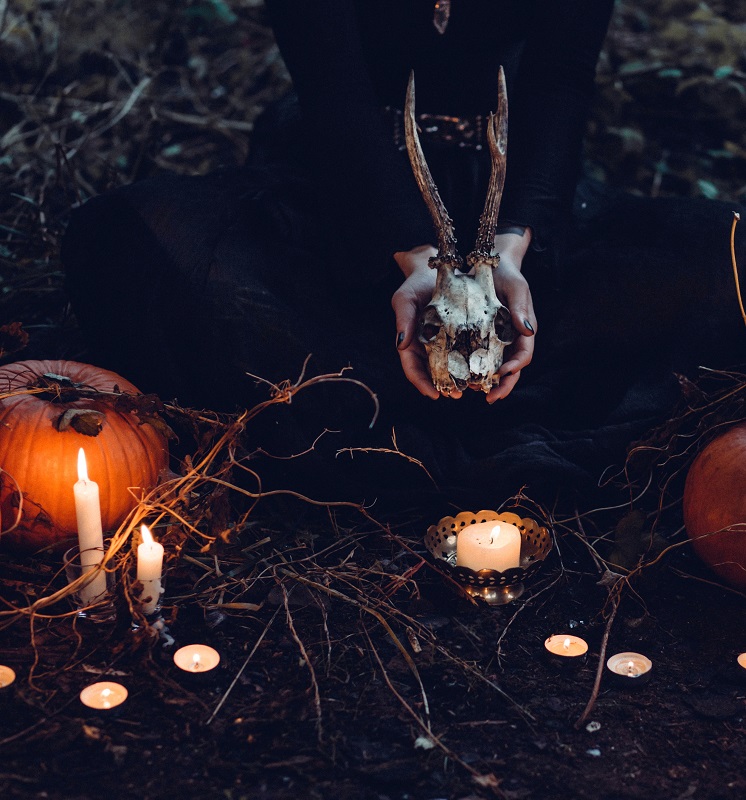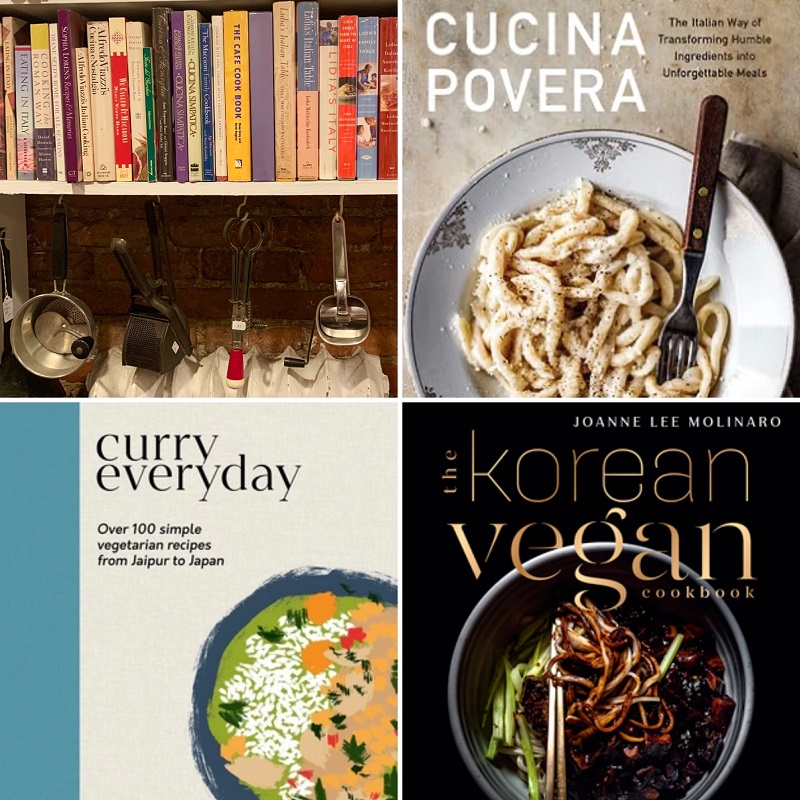Trauma, Bipolar, and the Restorative Power of Writing
The “Magical and Chaotic Life” of a Trauma Survivor
Amelia Zachry is many things. She’s a mom of two girls, a wife, a writer, and an advocate. Most importantly, she is someone who has gone through hell and back. She’s emerged on the other side of trauma with her resilient and breathtaking memoir Enough: A Memoir of Mistakes, Mania and Motherhood coming in mid-October to great reviews so far.
Her book has been called “unflinching,” “fierce,” “unforgettable,” and “compelling,” and I’d have to agree. It’s a story about surviving sexual assault, but it’s also about mental illness. Not to give away the whole story but when Amelia was nineteen, she was assaulted by another student at her university in Kuala Lumpur, Malaysia where she is originally from. What follows is her journey toward shame and silence (similar to what author Tiffany Phillippou experienced) and isolation as she fought the demons inside her head.
Once Amelia realized that she could tell her story, she dove into writing her memoir. From her brightly lit house in Lexington, Kentucky, she and I chatted about her journey toward becoming an author and how writing a memoir is the most restorative act. We connected easily over video chat, as I discovered that she is also a parent of two, likes to receive cards in the mail (as do I) and that we both enjoy being in nature but are weary of campsite restrooms.
Furthermore, talking about depression or bipolar disorder or any psychological condition is frowned upon in Asian cultures, so I certainly understand where Amelia is coming from. I’m so excited to finish Amelia’s book, which in many ways, is an expression of herself and a powerful voice for many women who’ve been sexually assaulted and/or who’ve gone through traumatic events coupled with mental health issues. Luckily, there is a happy ending to Amelia’s story. To find out, you’ll need to grab a copy of her book.
What was even more exciting was our discussion of family recipes. If you know me you’ll know that I’m a fan of comfort foods—the kind that your mom or grandma makes for you. Amelia is kind enough to give us her family recipe for lontong, a rice cake popular in Indonesia and Malaysia.
But first, here’s what Amelia had to say:
Tell us a bit about your journey to becoming an author. Was this the career you always knew you wanted?
To be honest, I never thought I’d be a writer. When I was young I used to write a lot and I participated in public speaking competitions. I simply wrote a lot. My mom was a TV producer and I would write scripts for her programs. Scriptwriting eventually became a freelance job.
Eventually, I wrote my memoir but I didn’t expect to publish it or anything. It was just me writing my story out to release the pain I had silenced. But then I started working with an editor and I thought “This is getting serious.” I gave myself permission to write. So I guess you could say that I found myself as a writer. I didn’t seek out writing as a profession or anything; it just found me.
What’s the best advice you’ve ever been given, with regards to careers and success?
I had a writing coach who told me that I should have courage with my voice. Stand by your truth and believe in what you write. This was really powerful for me as I struggled with how to portray my story. You know you want to write a memoir in a way that doesn’t truly offend certain people; that it would be a clear portrayal of my experience and be received well. But then I thought “this is my story and I should tell it the way I want to.” I also have to quote Maya Angelou “There is no greater agony than bearing an untold story inside you.” I absolutely believe in this because it’s so true for me.
What books are on your reading list right now?
Currently, I’m reading What My Bones Know by Stephanie Foo. She is a Malaysia-born author just like me. I really like her storytelling. It’s about trauma as well. Then there’s Invisible Man, Got the Whole World Watching: A Young Black Man’s Education by Mychal Denzel Smith which is also really good. But I have to say my favourite book of all time is Where’d You Go Bernadette by Maria Semple. That book made me feel things—it made me cry, it made me laugh, it made me think, it did everything for me!
When you’re writing – where do you write? What is the setting?
Because I write about heavy topics, I generally have a writing ritual. This involves listening to a specific playlist (I still download music) which are 16 tracks of Celtic music that play repeatedly and I set goals for myself. I also meditate before and after I write. Meditating is about giving myself the clarity to write. I tell myself a specific mantra and it helps me get in the zone and protects my emotional wellbeing. I think self-care is important when it comes to writing about emotionally stressful subjects.
As for time, I write whenever my kids are in school or late at night when everyone’s sleeping. This helps me center my thoughts. Being out in nature really helps too. I love staying in a cabin in the woods where it’s isolated and quiet. It’s very inspiring and makes me feel creative. I’ve done a lot of my writing this way too. I don’t like camping, though, because of the whole bathroom situation…
How have you been staying connected to your friends/family/community during COVID-19?
I left Malaysia 12 years ago but my family is still there. During COVID, we communicated online like many people did. I have two best friends—one of them likes to send greeting cards [holds up a card] and it was a great way to stay connected. So we’d send each other cards back and forth, sometimes it’s a simple message like “I miss you,” but it really made a difference. She lives about an hour or so from me, but still…when you can’t see people in person it was nice knowing they were still thinking about you.
I also did some writing classes and met people that way.
Do you have exciting projects coming up? If so, please tell us.
I’m in the outlining stage of another memoir right now. I’m dabbling with some chapters and I do plan on getting it published in the future. I’m also exploring poetry. It’s so beautiful and fascinating.
I have to tell you—I was not really in the writing community so to speak with my first book. I wasn’t around other writers or poets, didn’t really know what it was like to be a writer, but since I wrote my memoir I’ve tried to put myself out there…which is how I found poetry. I have a deep enjoyment of poetry. Maybe someday I’ll try writing some myself.
What is your dream brunch date? Where and with whom?
My dad, who’s in Malaysia, had heart failure which unfortunately led to a brain injury, so he’s there but not really there. So my dream brunch would be to have it with my father before the medical incident. I’d ask him all kinds of questions. Of course, I’d cook him brunch! We’d talk about everything. I’d ask him what he thought success for me looked like. Did I actually achieve what he wanted me to achieve? How does he feel about me now versus then? Mainly, I want to know what success means in his eyes. I want to know what we could have done differently to be in each other’s lives more engagingly. He and I used to butt heads a lot but I still want him to be proud of me.
What is your ideal comfort food?
Malaysian food, for sure. There’s a specific dish my mom makes called “lontong” (see recipe below) which are compacted rice cakes eaten with soup like coconut curry. It has special ingredients like jicama, tofu skin, dried shrimp, tempeh, etc. and is eaten with chili paste. Sometimes I make it to feel connected to her. When my mom makes it brings back memories.
Which authors inspire your work the most?
There are two authors who inspired my work a lot. One is Gina Frangello who wrote Blow Your House Down. She writes so candidly and vividly about painful experiences and was not afraid to unleash her thoughts even when they could be perceived as controversial. She wrote with no shame and guilt which has long been an issue for me. I was so inspired to write my story after reading hers because it felt like there was space or permission for me to write it. She gave me the courage to write my story.
Secondly, Suzy Favor Hamilton who wrote Fast Girl: A Life Spent Running from Madness is a great author who made me feel seen and heard on the page. I felt like somebody actually understood me. There is so much to be said about reading a book and identifying with the characters, validating our own experiences. I wanted to share that experience with others like me. Like Frangello, Hamilton inspired me to share my truth and to have conviction in my work!
Want to learn more about Amelia? Check out her website, grab a copy of her memoir, or try your hand at making the lontong below! Let us know what you think here.
AMELIA’S LONTONG RECIPE (INSPIRED BY HER MOM)
NOTE: many of these ingredients can be found at a local Asian supermarket. If you can’t find them, says Amelia, you can always check Amazon.
INGREDIENTS
1 liter coconut milk
1 liter warm water
150g red onions*
30g ginger*
50g garlic*
80g fresh turmeric*
30g dried chili (soaked, boiled and blended) *
40g dried shrimp (grounded finely)
2 candlenuts (buah keras, grounded finely)
150g long beans (cut into 5 cm in length)
150g cabbage (cut into pieces)
100g fuchuk (beancurd skin)
150g lobak merah (cut into chunks)
2 stick lemongrass (crushed)
40g galangal (crushed)
4 beancurd (cut into 4 pieces, deep-fried till golden)
2 pcs tempeh (cut into cube and deep-fried)
800g compressed rice cakes (cut into cubes)
5 hard-boiled eggs (shelled, halved)
4 tbsp grated coconut (stir-fried in dry pan till golden with a bit of palm sugar)
salt and sugar to taste
INSTRUCTIONS
- Combine coconut milk with warm water.
- Blend the * ingredients and mix together with dried chili paste.
- Heat 6 tbsp oil in wok till hot. Stir-fry the paste mix, dried shrimp, turmeric and candlenuts till fragrant.
- Pour in coconut milk and bring to a boil over moderate heat.
- Add long beans, cabbage, lemongrass and galangal. Cook till vegetables are softened.
- Stir then add deep-fried beancurd and tempeh.
- Season with salt and sugar.
- Arrange steamed rice cakes on a serving dish. Add coconut gravy then sprinkle with grated coconut. Top with halved eggs.
- Steamed rice cake
- Wash and soak the rice in water overnight.
- Drain the following day.
- Line a metal tin with banana leaf or cloth then pour in the rice.
- Place the metal tin in a pot of boiling water and boil for 60 minutes.
- Leave it to cool completely before cutting it into pieces.




